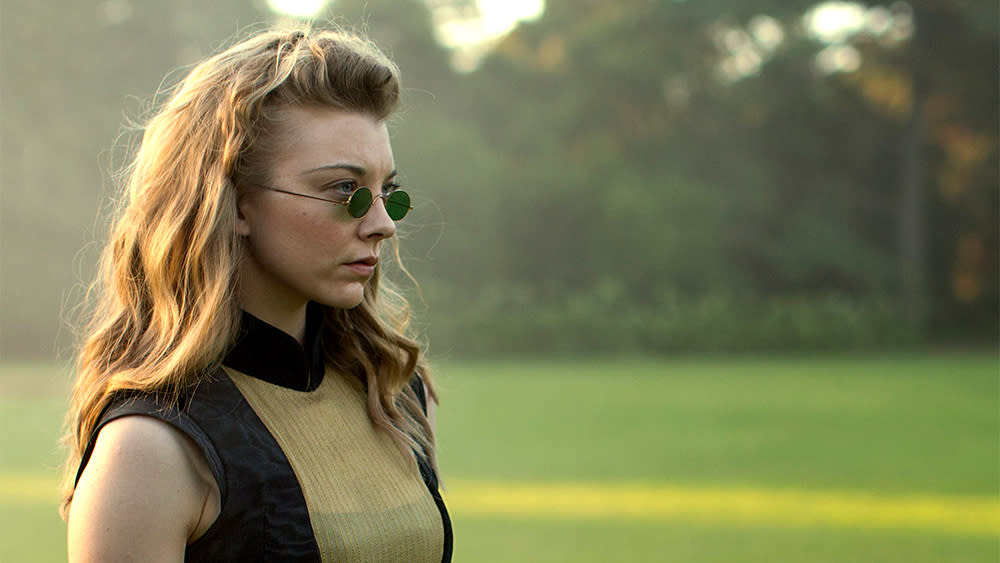TV Review: ‘Picnic at Hanging Rock’

Joan Lindsay’s much-acclaimed 1967 Australian novel “Picnic At Hanging Rock” has already resulted in one stunning adaptation — Peter Weir’s 1975 film of the same name — so a second attempt, this time a television series, may already feel unnecessary. But it doesn’t take long for writers Beatrix Christian and Alice Addison to make the case for their own 2018 “Picnic,” a darker, more mysterious, and extended version that manages to feel updated for our time while still keeping the original 1900 setting.
In “Picnic At Hanging Rock,” the central mystery is laid out immediately: Four young women — three students and their teacher — suddenly vanish on Valentine’s Day, 1900, while on a school picnic at, well, Hanging Rock. The base premise is familiar to fans of crime series, but this is no ordinary drama; it’s eerie and haunting. It’s less dreamy (a quality frequently ascribed to the film) and more of a nightmare that you’ll be eager to dive into.
It’s fitting, then, that Headmistress Hester Appleyard (Natalie Dormer from “Game Of Thrones”) is creepier and crazier (and younger, now closer to the students’ ages) than we’ve seen before. The series begins with an extended sequence of Hester, in full black widow attire, touring the mansion she’ll soon turn into a school, hinting at her secrets and bidding goodbye to her past self. She’s vague about her life — “My background doesn’t encourage conversation” — and stern and cold with her students. When one young girl gets her first period on the morning of the picnic, Hester’s simple response is “bad timing will define your life.” She has unsettling, vaguely-lucid dreams in the pilot, while the second episode flashes back to a sinister background. Dormer inhabits the role fully in a careful, mesmerizing performance down to the smallest details: her fake smiles, side glances, and snarling way of saying certain students’ names.
“Picnic At Hanging Rock” is a mystery-drama that’s driven by various strong women. Miranda (an enthralling Lily Sullivan), the de facto leader of the girls, is an oft-barefooted tomboy likened to an angel. She also, at one point, slams a pitchfork into the foot of a man — for good reason. Miranda, explicitly described as “excitable and drawn to danger,” seems to exist in a place between dream and freakish nightmare: running through the woods in all white or curiously plunging her hand into the dirt in a move that seems to unearth something bigger than it should. She’s one of the women who goes missing; the others are heiress Irma (Samara Weaving), “bastard child” Marion (Madeleine Madden) who is referred to as the “dark one,” adding in racial implications that didn’t originally exist, and math/geography teacher Greta McCraw (Anna McGahan), last seen out-of-character and out of her skirt — one student says that she “looked rude.”
It’s a testament to the writers (and perhaps some of viewers’ own projections) that this period piece feels weirdly contemporary at times. It touches on some familiar themes like the power (and powerlessness) of women, the obsession of unexplained mysteries, the intimacy of female friendship (it’s notable that the three missing students communicate mostly through exchanging glances, rather than verbally), and repressed sexuality — the emphasis on “purity” and “refinement” is unsubtle throughout. But it’s not just the writing; the directing—by Larysa Kondracki in the first two episodes—also boosts the whole series, contributing to its overall infectious aesthetic.
There are times — such as the titular picnic — where the series is dazzlingly bright and colorful (the white dresses are impossible to forget). The picaresque Hanging Rock looms over the first two episodes but switches from being beautiful to terrifying in the blink of an eye, depending on which aspect the show is focusing on. The directing plays with speed, with canted angles, and with our own perception, delighting in vaguely-warped images. Sometimes “Picnic” is claustrophobic while zeroing in on Hester’s worried face; other times it consists of sprawling, inviting wide shots to set the scene. It feels like we’re being lured into a bright landscape that becomes darker the closer you get. “The dark gets in,” Hester tells young Sarah (Inez Curro), an orphaned student who clings to Miranda. “It gets everywhere.”
What also works for “Picnic At Hanging Rock” is its extended length — six hour-long episodes vs. one movie — that allows it to dig deeper into the story and characters. It flashes back to explore the girls’ friendship and curiosity before they went missing, depicts the rituals and punishments of the Appleyard school, and builds a compelling internal story about bible studies teacher Dora Lumley (Yael Stone, a standout). “Picnic” isn’t just about the girls, but how their disappearance effects the whole town: the gossips, the teachers who blame themselves, the young man Mike (Harrison Gilbertson) who becomes obsessed and investigates on his own.
For many, “Picnic At Hanging Rock” might be a retreading of an already-great story. But even if you’ve seen it already, the television adaptation makes the case for another, closer look.
TV Review: ‘Picnic At Hanging Rock’ on Amazon
Limited series, six episodes (two reviewed): Amazon, Friday, May 25. 60 min.
Related stories
TV News Roundup: Wayne Brady Among Four to Join 'Colony' Season 3
Not Your Grandfather's - or Grandmother's - 'Picnic at Hanging Rock'
Berlin: Australia's Talent Mostly Here on the Small Screen
Subscribe to Variety Newsletters and Email Alerts!

